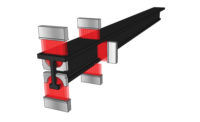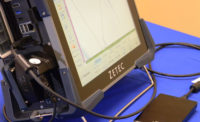Replacement of Radiography by Phased Array Ultrasonic Testing Drives Global Ultrasonic NDT Equipment Market
Evolution of portable phased array ultrasonic testing equipment leads to large-scale uptake
New analysis from Frost & Sullivan Analysis of the Global Ultrasonic Non-destructive Test Equipment Market, finds that the market earned revenue of $450.2 million in 2012 and estimates this to reach $585.7 million in 2017. The study covers thickness gauges, digital flaw detectors, phased array flaw detectors, and test machines.
The wide-scale adoption of phased array ultrasonic testing as a replacement for conventional film radiography started with the development of truly portable phased array ultrasonic testing instruments, and the increasing operational expenses for using film radiography.
"In the early 2000's when truly portable phased array ultrasonic equipment was introduced at a fraction of the cost of stationary systems, end users had no hesitation in adopting these instruments," saidFrost & Sullivan Measurement and Instrumentation Senior Research Analyst Nikhil Jain."The benefits of this advanced technology, such as faster and accurate volumetric inspection, that provide an image of the test object at an affordable price were the drivers for wide-scale adoption."
Over the past decade, due to evolution of technology and products related to ultrasonic NDT, there has been a sudden growth in demand, which has increased the need for technicians certified in ultrasonic testing. However, the supply of technicians have not kept up with demand, resulting in a massive shortage of ultrasonic testing and phased array ultrasonic testing certified technicians, which is restraining growth potential. While some countries have qualified ultrasonic testing technicians, they do not possess the necessary skills to perform phased array ultrasonic testing, which demands greater knowledge and experience.
"The ultrasonic NDT equipment manufacturers have realized that a lack of certified and skilled technicians is impacting market development and are addressing this challenge in two ways," observed Jain. "One is by making the user interface and software as intuitive as possible in order to enhance usability, while the other focuses on setting up training institutes or partnering with smaller NDT training institutes to educate technicians on the operation of the latest equipment."
Looking for a reprint of this article?
From high-res PDFs to custom plaques, order your copy today!





